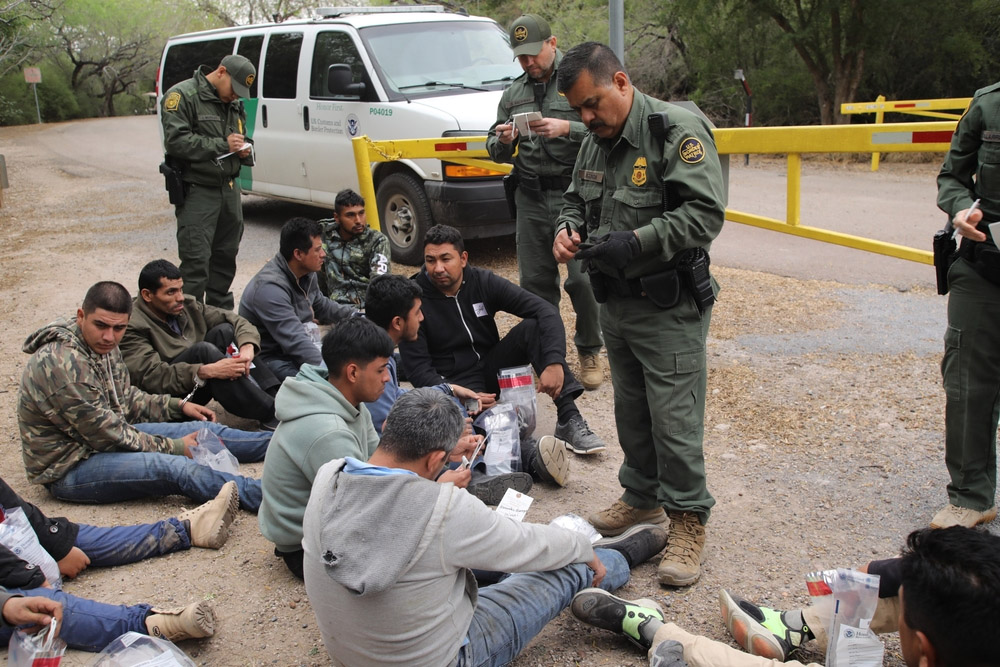By Nantoo Banerjee
India, recognized as the second most favored destination for illegal migrants worldwide, has much to observe from the United States regarding its recent management of this issue. Although former US President Donald Trump has received significant attention for his efforts to expel illegal immigrants, such deportation activities were also prevalent during the tenure of his predecessor, Joe Biden, who executed 1.5 million removals—comparable to the number during Trump’s initial term—without attracting much media focus. Former President Barack Obama had also adhered to similar practices. Over the years, the US has established itself as the primary destination for unlawful migrants, housing an estimated 11.4 million undocumented individuals, chiefly from Mexico, followed by El Salvador and Guatemala.
The International Organisation for Migration estimates that India has approximately 10 million undocumented migrants, attributed in part to its lenient deportation policy, which has facilitated significant illegal migration from neighboring countries like Bangladesh, Myanmar, Nepal, Pakistan, and Afghanistan. Few would contest that the world’s most populous nation requires a robust strategy to address illegal immigration to ensure the safety and security of its citizens. Economically, India lags behind its neighbors, such as China, Saudi Arabia, and the UAE, which maintain strict immigration policies. Nonetheless, India’s soft democratic framework and frequent judicial interventions complicate the forceful deportation of undocumented migrants. In contrast, the US has exhibited a formidable determination in managing illegal immigration.
In stark contrast to the economic conditions of those illegally moving into India, Indian migrants seeking entry into the US and Canada typically come from more affluent backgrounds. Many rely on private agents to facilitate their overseas journeys at exorbitant costs. Notably, a significant portion of these migrants comes from states like Gujarat, Punjab, and Haryana, incurring fees ranging from Rs. 40-60 lakhs for individuals and Rs. 1-1.5 crore for families. Indian External Affairs Minister S. Jaishankar recently emphasized the need for a “strong crackdown on the illegal migration industry,” prompting central investigative agencies and state police to announce a series of measures against unscrupulous travel agents. Government data revealed that 3,094 “illegal agents” had been flagged on the eMigrate Portal by October 2024, and actions would be taken based on information from deportees regarding these agents and their networks.
Interestingly, there is a lack of reliable data on Indian migrants living unlawfully in the US, with estimates from the US Department of Homeland Security ranging from 18,000 to 220,000 unauthorized Indians in 2022. These disparities underscore the ambiguity regarding the actual size of the undocumented Indian population, though it is generally perceived that Indian migrants constitute a minor segment of the overall unauthorized immigrant population in the US. However, skepticism arises regarding Prime Minister Modi’s recent assertions during his Washington DC visit that such migrants are “children of very ordinary families, lured by big dreams and promises.” It is understood that Indian illegal migrants pay substantial sums to local agents for entry into the US. The Prime Minister also indicated India’s commitment to repatriating its nationals illegally residing in the US and cracking down on the “human trafficking ecosystem.”
Since 2009, the US has deported as many as 15,756 illegal Indian immigrants. Hence, the actions taken by the Trump administration were not unprecedented. Official statistics show the highest deportations occurred in 2019 (2,042), followed by 1,889 in 2020, while numbers fell to 805 in 2021 and slightly increased to 862 in 2022. By 2023, deportations dropped to 617, with 1,368 recorded in 2024. As of February 5, 2025, 104 illegal Indian immigrants had been deported. President Trump initiated a series of executive orders aimed at revamping the US immigration system, affecting how migrants are processed and removed.
India shares responsibility with the US concerning the emigration of illegal migrants and their unauthorized entries into the US. Unauthorized migration is a criminal offense, and immigration and customs authorities are accountable for managing the movement of these individuals. Illegal immigrants are offenders who must be handled according to the law. The notion of “innocent criminals” does not hold. If deportees are secured before being boarded onto military aircraft, it is likely for the safety of the crew aboard. There is no guarantee against potential violence or hijacking attempts by deportees during flights.
India stands to gain significantly from studying the ongoing deportation processes in the US, particularly as it grapples with relentless illegal immigration across its extensively porous borders with Pakistan, Bangladesh, Nepal, and Myanmar—77 years post-independence. According to the Ministry of Home Affairs, India’s total land border stretches approximately 15,106.7 kilometers, encompassing borders with Pakistan, China, Nepal, Bhutan, Myanmar, Bangladesh, and Afghanistan. Presently, India is engaged in negotiations with Bangladesh to implement fencing along certain border segments. Bangladesh accounts for the longest boundary with India, spanning 4,096.7 km. Jobless illegal immigrants are often vulnerable to exploitation by terrorists, drug traffickers, and other criminal elements. While efforts to hinder the entry of illegal immigrants are imperative, the deportation process must be conducted with utmost seriousness and broad international exposure. (IPA Service)


Leave a Reply